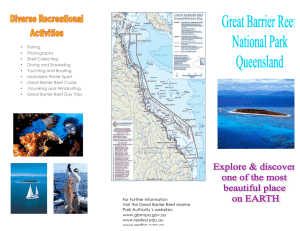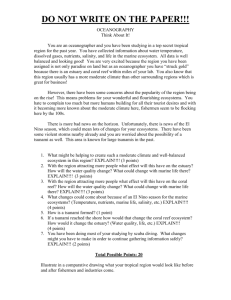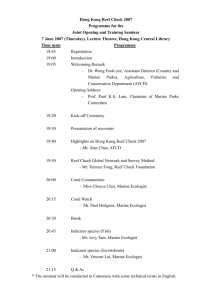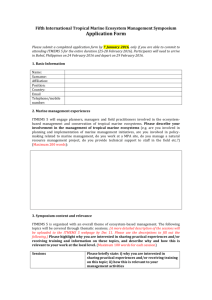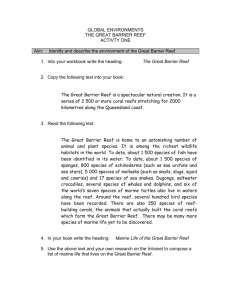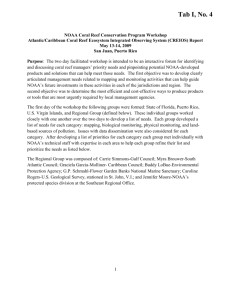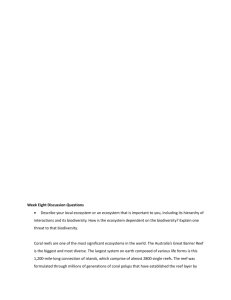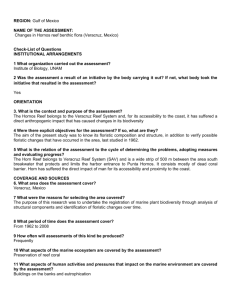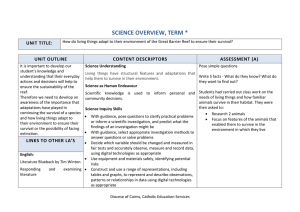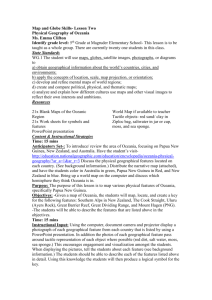Australia Case study example - Principle 6: The Great Barrier Reef
advertisement
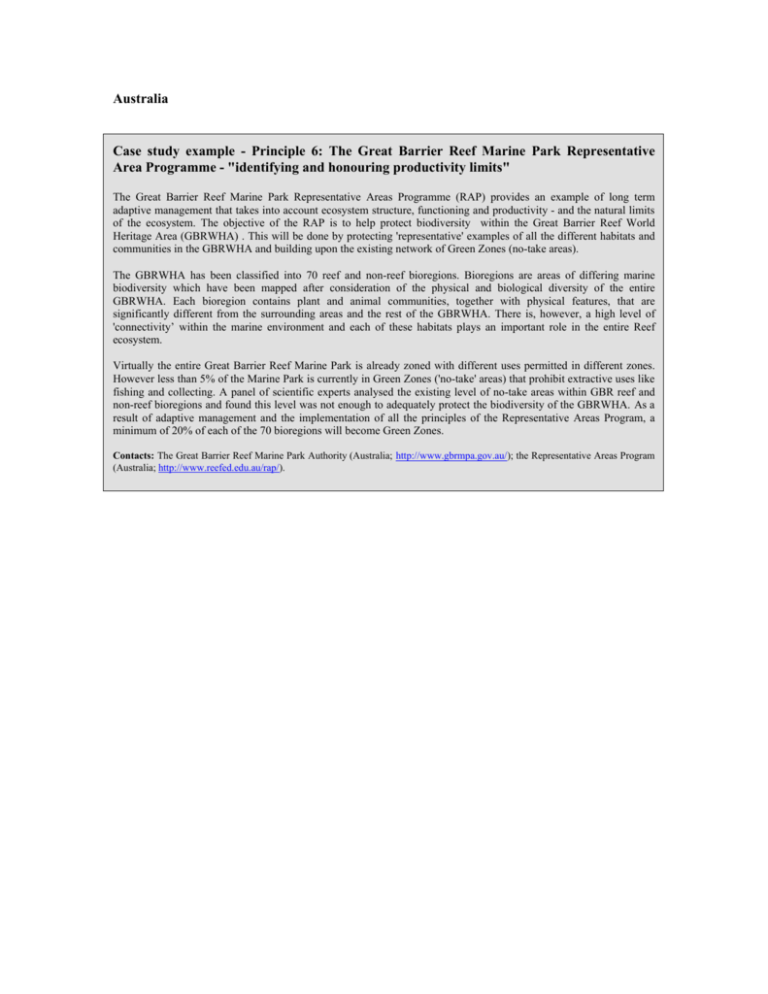
Australia
Case study example - Principle 6: The Great Barrier Reef Marine Park Representative
Area Programme - "identifying and honouring productivity limits"
The Great Barrier Reef Marine Park Representative Areas Programme (RAP) provides an example of long term
adaptive management that takes into account ecosystem structure, functioning and productivity - and the natural limits
of the ecosystem. The objective of the RAP is to help protect biodiversity within the Great Barrier Reef World
Heritage Area (GBRWHA) . This will be done by protecting 'representative' examples of all the different habitats and
communities in the GBRWHA and building upon the existing network of Green Zones (no-take areas).
The GBRWHA has been classified into 70 reef and non-reef bioregions. Bioregions are areas of differing marine
biodiversity which have been mapped after consideration of the physical and biological diversity of the entire
GBRWHA. Each bioregion contains plant and animal communities, together with physical features, that are
significantly different from the surrounding areas and the rest of the GBRWHA. There is, however, a high level of
'connectivity’ within the marine environment and each of these habitats plays an important role in the entire Reef
ecosystem.
Virtually the entire Great Barrier Reef Marine Park is already zoned with different uses permitted in different zones.
However less than 5% of the Marine Park is currently in Green Zones ('no-take' areas) that prohibit extractive uses like
fishing and collecting. A panel of scientific experts analysed the existing level of no-take areas within GBR reef and
non-reef bioregions and found this level was not enough to adequately protect the biodiversity of the GBRWHA. As a
result of adaptive management and the implementation of all the principles of the Representative Areas Program, a
minimum of 20% of each of the 70 bioregions will become Green Zones.
Contacts: The Great Barrier Reef Marine Park Authority (Australia; http://www.gbrmpa.gov.au/); the Representative Areas Program
(Australia; http://www.reefed.edu.au/rap/).
